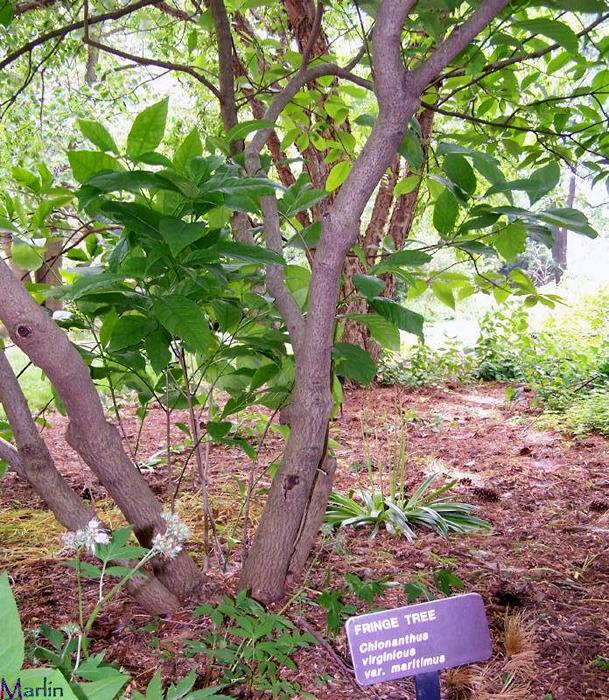Fringe Tree – Chionanthus virginicus

Family Oleaceae – Olive, Ash, Lilac and Privet
Fringe tree is commonly called “Old Man’s Beard. Hardiness Zones: 3-9 / Height: 12 to 20′
One of our finest spring bloomers is the fringe tree, Chionanthus virginicus, a small form considered by many to be one of the most beautiful North American native plants. But, beautiful as it is, it remains uncommon in gardens. Fringe tree, also called Grancy Gray-beard and Old-man’s beard, is native throughout the southeastern states but is nowhere abundant. It blooms as the dogwoods finish and after the trees have leafed out, so it’s easy to miss in its wild habitat.

It grows as a multi-stemmed tree or large shrub, usually reaching 15 to 20 feet in height and spread in cultivation. It can reach 30 feet in the wild with a main trunk sometimes 10 inches through, though such specimens are rare. The snow white fringe tree flowers are produced in loose, terminal 6-inch long panicles that have the ethereal look of puffy white clouds. Each flower on the panicle is four-petaled, strap shaped blooms. Individual plants are dioecious (either male or female), with male plants being more showy because of their longer petals. Like forsythia, the fringe tree belongs to the olive family. Fringe trees are deciduous with the opposite, 6-inch long, toothless, glossy green leaves appearing as plants bloom. Fringe trees are notoriously slow growing, seldom making more than 6 inches of growth a year.

Form: Small to medium size, spreading, open crown; variable shape between seedlings; often multi-stemmed.
Panicles of creamy white fragrant flowers suspended from branches in May; male flowers are more showy; dark blue fruit in fall.
Healthy, attractive trees add interest, pleasure, and value to landscapes. Some factors to keep in mind as you select a tree relate to your projected planting site and some factors relate to you. Healthy plants, growing under conditions that suit them, are marvelously engineered to deal with minor incidence of heat, cold, drought, storm damage, pests, and disease. Sometimes we unknowingly stress them, reducing their ability to stay healthy.
Family Oleaceae – Olive, Ash, Lilac and Privet
The olive family contains 25 genera and over 500 species of flowering plants. Most species are native to temperate and tropical regions of the Northern Hemisphere. The best known of this family are olive, ash, privet, lilac, and Forsythia.

